Jump to
Edible Salts – What is It?
Edible Salt is a mineral basically composed of Sodium Chloride (NaCl), which is a chemical compound belonging to the larger class of various other chemical salts available. But here I am discussing edible salts which we take and use in our day to day life. Salt which is naturally found as a crystalline mineral called rock salt or halite. A big source of our salts’ production is the seawater. The open ocean has about 35 grams (1.2 oz) of solids per litre of seawater, a salinity of 3.5%.
Edible Salts – Why so Important?
There are mainly five basic tastes (sweet, bitter, sour, salty and umami) available in a wide range of dishes. Without salt probably no dishes can be made. Thatswhy in the kitchen salt carries the most important role. When we add salt, the integral particles of food releases and make the beautiful aroma and taste. That taste and aroma we feel depend on which type of salts and how much we have added to our dishes. It changes (highlights or suppresses) the tastes of the original food flavor and makes it suitable according to dishes.
For example, if we add some small amount it will lower the bitterness and enhances sour, sweet and umami. If we use a high amount then it cuts the sweetness and boosts umami and make savory, meat-like dishes perfect.
Edible Salts – Types and Their Uses
From above one simple thing we can finally understand that edible salts are required to make food tasty. But there are different types of edible salts we use in our kitchen which are easily available in the market. This variation depends on their components and raw-sources. Food lovers must keep these following essentials types of edible salts in their kitchen. Keep reading and let’s discuss the details of each.
1) Table Salt
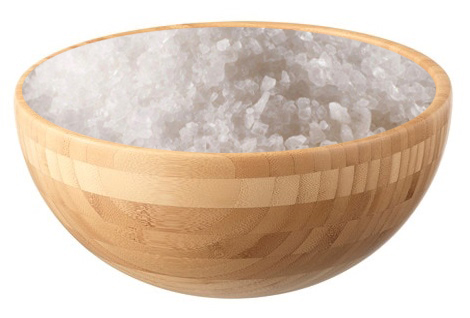
What is it: Table Salt is the most common type salt we use in our daily life. It is the normally produced from the underground salt mine through highly refined, removing impurities and trace minerals and then added with an anti-caking agent to protect from clumping. To protect us from hypothyroidism and other maladies disease causes due to lack of iodine, most of the table salt companies add iodine externally to maintain iodine level in salt. As salt is produced through the refinery process original salt flavor may be changed.
When to use it: Table Salt is consistent in its saltiness if we use a certain company product. This type of salt particle is a refined small sized so we can easily measure how much to add in our food. As this salt easily dissolves and has regular taste it is the main usable salt for baking recipes in our kitchen. And its taste cannot be substituted by other types of salts. It has property to control yeast growth and also strengthens gluten.
2) Sea Salt and Its Variants
- What is it: As produced by evaporation of seawater Sea Salt is usually unrefined and coarser than table salt. Due to unrefined, depending upon the quality of seawater it will still contain traces of other minerals like zinc, potassium, and iron etc. — which provides a complex flavor of the salt. By weight, it has the same amount of Sodium Chloride so we can use it as the healthier alternative of table salt.
- When to use it: If you like sea salt over table salt then you can sprinkle it on top of foods to feel the preferred and bigger burst taste. You can use a salt grinder and grind sea salt to a very fine grain and interchangeably use along with table salt.
“Sea salt” is a pretty broad term. We can find some variants of sea salt and these are described below
I. Maldon Sea Salt
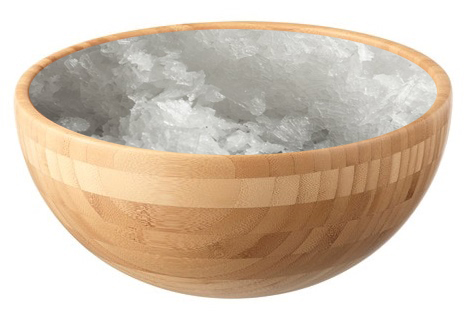
This is a variety of sea salt produced when sun rays evaporate the water that is collected at the time of waves from the Atlantic Sea wash up over the rocks leaves the crystal-formed salt on the rocks. Its flavor is very fresh and clean and especially used for seasoning, preserving, favoring and garnishing food items.
II. Fleur de sel
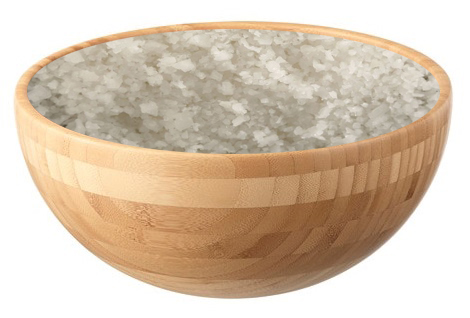
It is a French word which means ‘Flower of Salt’. It is the purest form, forming on the thin and delicate crust on the top layer of seawater in salt pans during the evaporation process. Fleur de sel retains moisture and has high mineral content, blue-grey tint, a stronger, saltier flavor traditionally used as a purgative and salve and nowadays to flavor and garnish dishes e.g. meat, vegetables, seafood, even sweets like chocolate and caramel. It should be used more sparingly on foods and also earned a nickname ‘the caviar of salts’.
III. Celtic Sea Salt
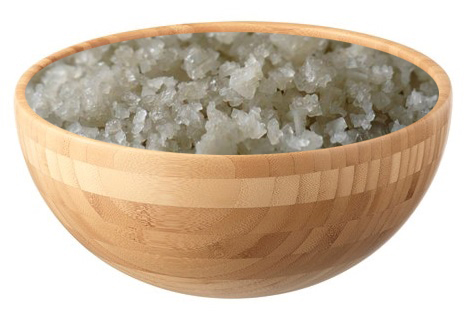
This French word meaning ‘Grey Salt’ also known as ‘Sel Gris’. At the coast of France, Celtic sea salt is harvested from mineral-rich seawater at the bottom of tidal ponds and raked out after sinking. Celtic salt has moist, chunky grains, grey hue, and briny taste. It’s great on non-vegetable based proteins like fish and meat as both a cooking and finishing salt for favoring dishes, as well as for baking.
3) Black Salt or Kala Namak
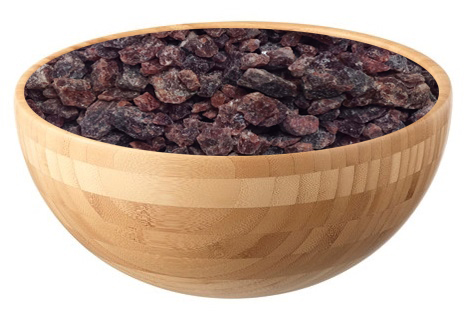
‘Kala Namak’ (in Hindi/Urdu) or ‘Black Salt’ in Nepalese or ‘Bire Noon’ is a variety of rock salt coloring brownish pink to dark violet translucent crystals when whole and purple to pink when it is in powder form. It has been collected in a jar with charcoal, herbs, seeds, and bark and then fired in a furnace for a full day (24 hours) before it’s cooled, stored and aged. It is salty and due to its sulfur content [Greigite (Fe3S4, Iron(II, III) sulfide] it smells pungent. Sodium chloride [NaCl] is the main component of Black Salt, also has various other elements which make its color and smell. Its rocks (raw material) is mostly found in Himalayan areas which gives it a name as Himalayan Black Salt.
This variety of salt mainly used in flavoring the vegan and vegetarian dishes to egg-free dishes. Black Salt has perceived medical qualities that’s why it been praised in Ayurvedic treatment from ancient times.
4) Himalayan Pink Salt
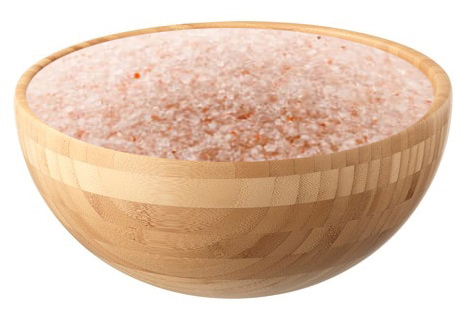
Himalayan salt is a variety of rock salt (hand-produced) from Khewra Salt Mine in the Himalayan region of Pakistan. This off-white to deep pink colored salt generally used as a finishing salt due to its intense flavor. It is also used as a spa treatment, ingredients for cooking, presentation, and serving of food. The unfinished piece of rock appears in shops as decorative lamps.
This salt is highly beneficial for health as it contains the more than 80 natural minerals and elements found in the human body but no proven scientific support is there for such claims. Those minerals and elements make this salt bolder-flavored than many other salts, which makes it perfect as finishing salt.
5) Kosher Salt
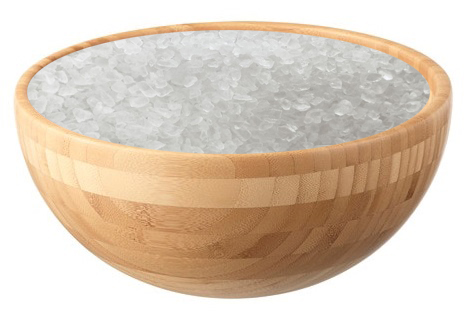
In U.S. Koshering salt or kosher salt or cooking salt or flake salt is a variety of Coarse Rock Salt that is flakier and larger-grained than regular table salt. Its larger grain size makes it perfect for dry brining of meat through extracting moisture from meat and reabsorption of salted moisture again which adds a surprising blast of flavor and fulfill our exact requirements. Kosher salt also dissolves quickly which makes it perfect for all-purpose cooking salt.
This salt can be used as an abrasive cleaner for cookware such as cast iron skillets because it has property to retain its abrasiveness when mixed with oil base but can be easily dissolved with water after cleaning which makes it more efficient for cleansing. However, most kosher salt is not beneficial for our health as it does not contain any added iodine.
6) Smoked Salt
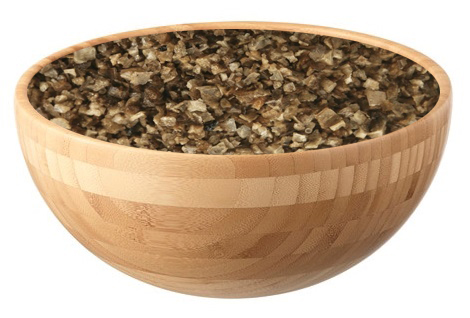
Smoked Salt is a variety when salt slow-smoked up to two weeks over a wood fire usually apple, hickory, mesquite, oak or alder wood. This smoking process helps this salt to add an intense and, yes, smoky flavor ranging from subtle to bold or even sweet to dishes. This flavor depends on the duration of smoked and the wood used in that process. As flavor is not a constant thus tastes will vary from brand to brand. To flavoring meats and heartier vegetables, like potatoes, Smoked Salt is the best choice.
7) Red Hawaiian Salt or Alaea salt
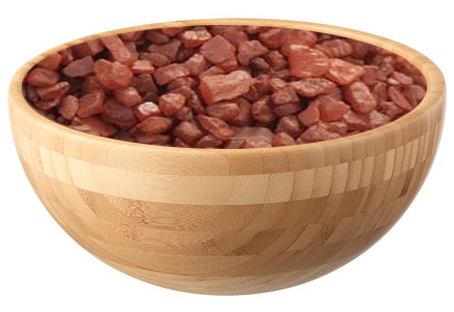
It is a variety of sea salt which is unrefined and mixed with an iron oxide rich volcanic clay called ‘Alaea’. This combination provides its brick red color thus this salt also known as Also called Alaea salt. This salt mainly used for cleansing, purification and the blessing of tools, canoes, homes, temples. It also adds robust flavor to seafood, meat and traditional island dishes like Kalua pig, Poke and Pipikaula.
8) Black Hawaiian Salt or Black Lava Salt
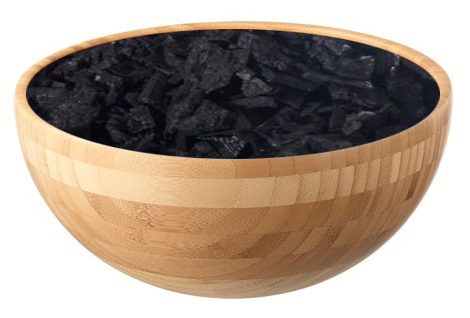
Black Hawaiian Salt is a type of sea salt made mainly from the volcanic islands of Hawaii or Cyprus area. This salt is deep black in color due to it contains activated charcoal thus also known as Black Lava Salt. This black Hawaiian salt is used great for finishing salt on dishes of seafood and pork as it is coarse-grained and crunchy.
9) Flake Salt
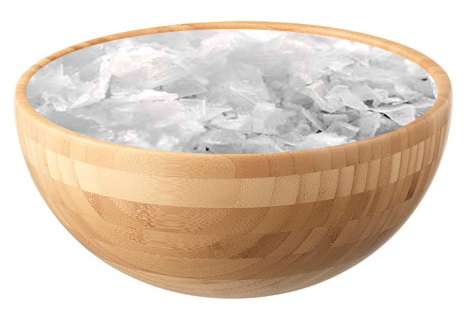
Flake Salt is a salt-category characterized by their dry, plate-like (“lamellose”) crystals which includes various different salts of many shapes. Shapes like irregular shavings, boxes, pyramidal shapes or potato chip-like laminated crystals. These varying crystal structures depend on various processes and technology used e.g. through evaporation, boiling or other means.
Compared to other types of salts low amount of other trace elements present in this category salts which makes it a stronger salty flavor and have a crunchy texture and relatively fast dissolution rate due to its shape. This salt can be used for cooking dishes and also as finishing salt on meat-based dishes.
10) Pickling Salt
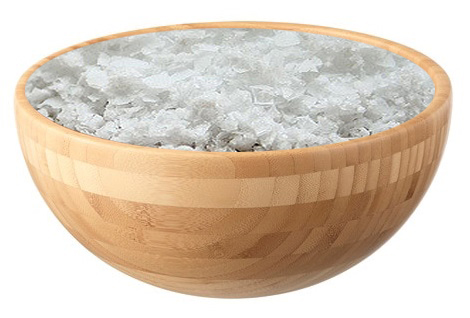
Pickling salt is a very fine-grained salt, highly dissolved in water which is best for brine, canning and manufacturing pickles. It contains sodium chloride like table salt but unlike table salt, it missing iodine and any anti-caking products as those added things discolor the product.



Very detailed.. n informative.. just keep it up.. would like to know more in various topics
Thanks a lot. I will always try to deliver best content to my viewers.